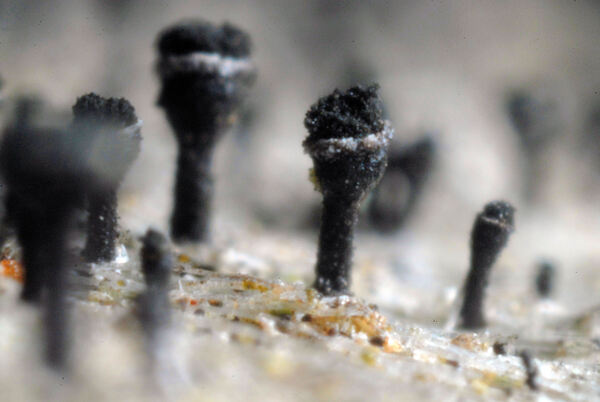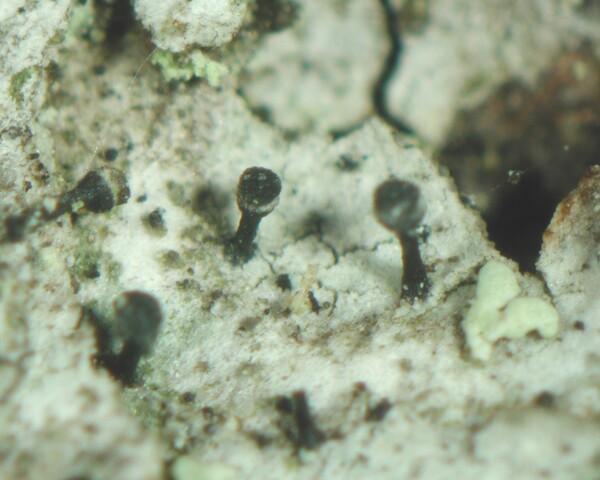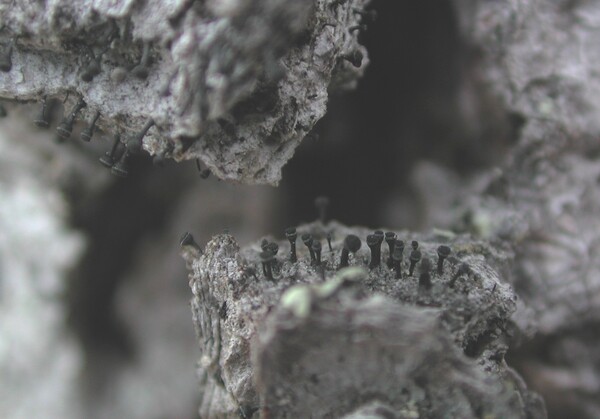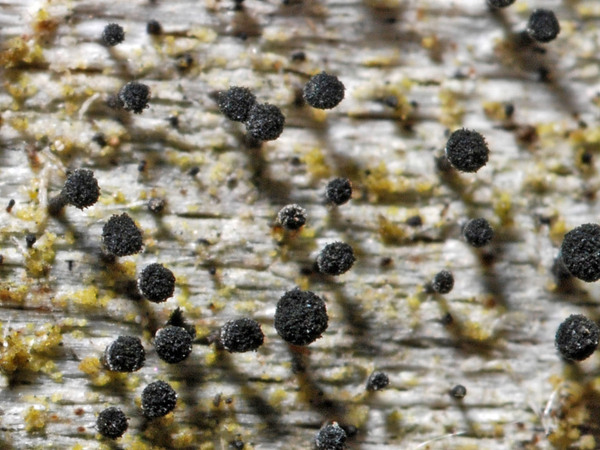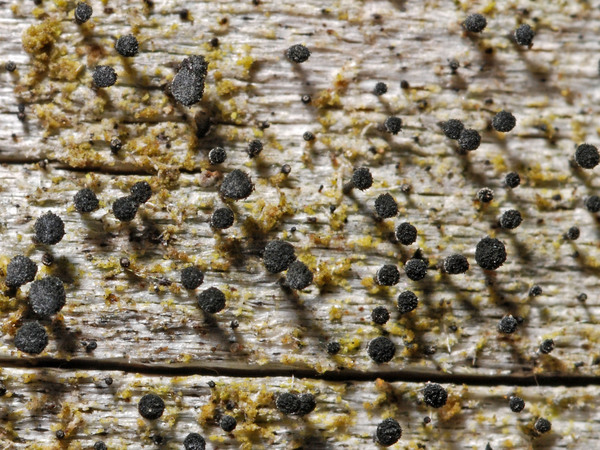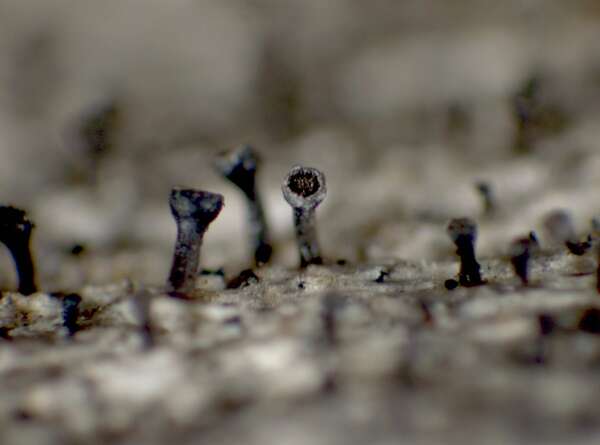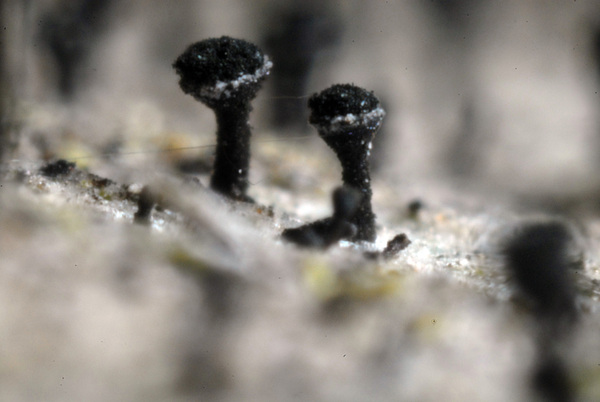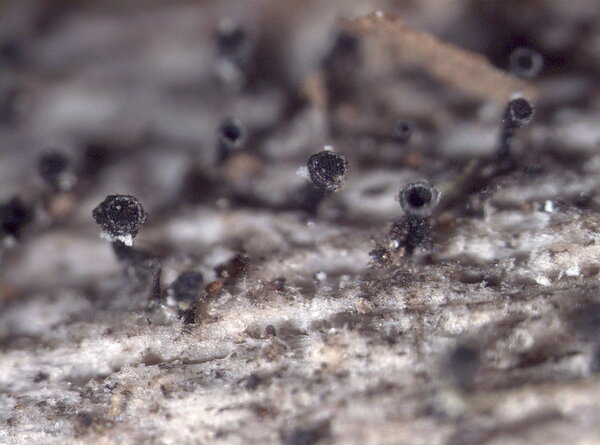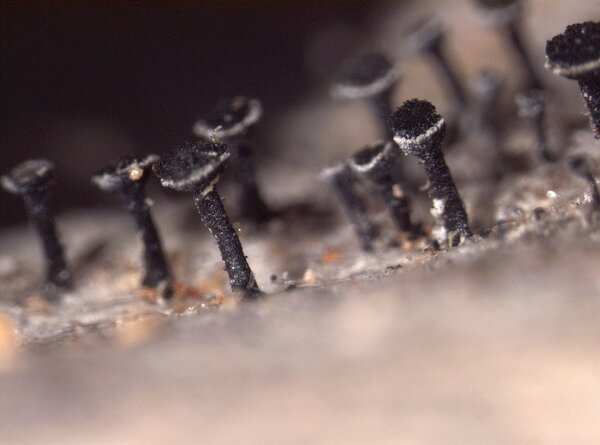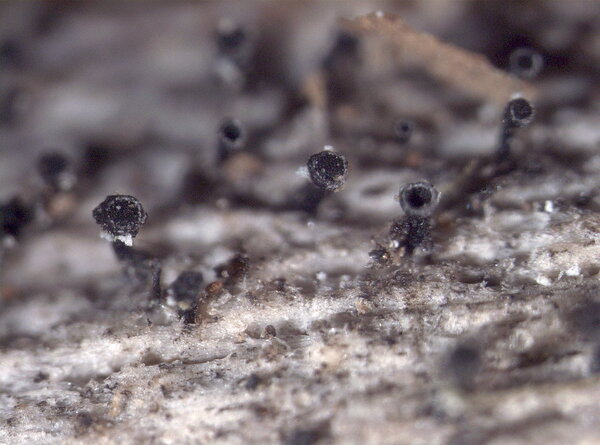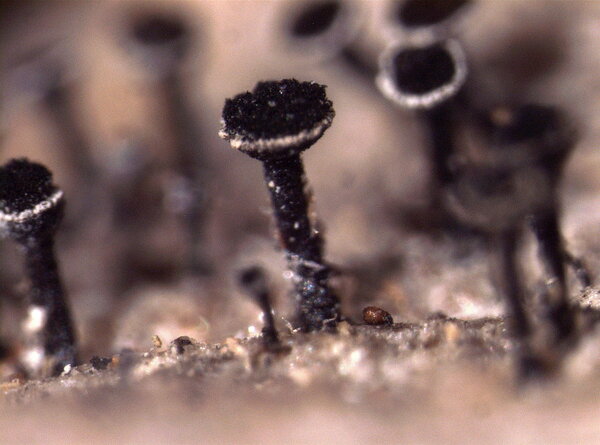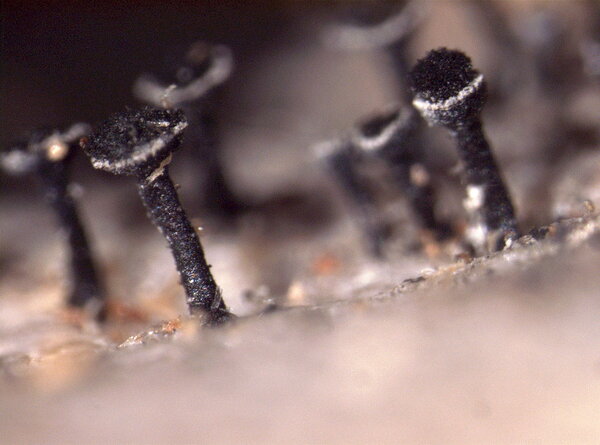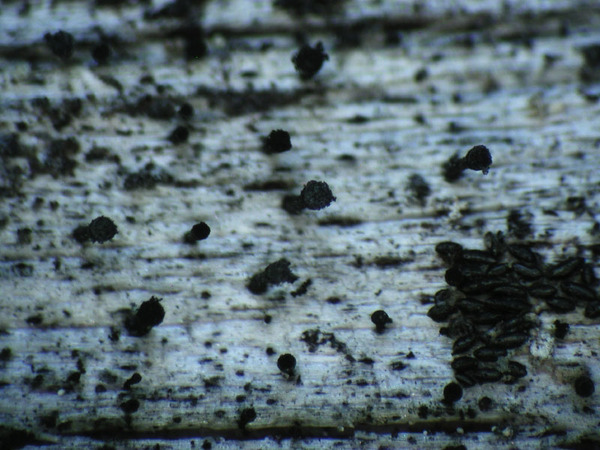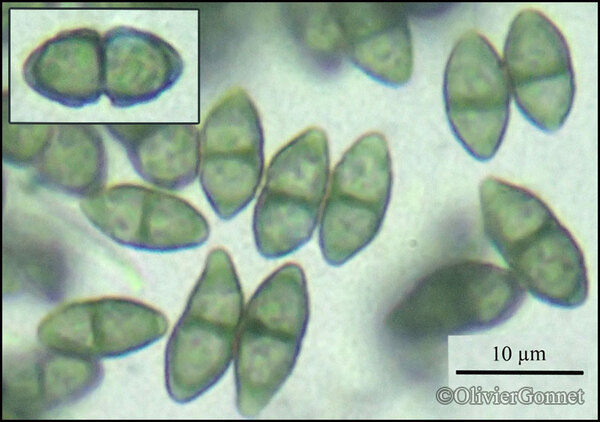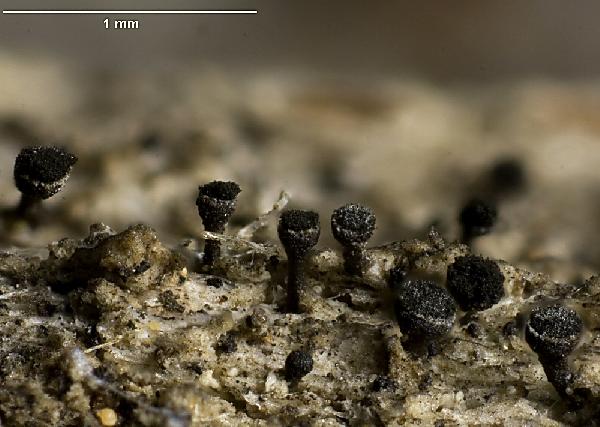Calicium glaucellum Ach.
Meth. Lich.: 97, 1803.
Synonyms: Calicium discoidale Ach.
Distribution: N - Frl (Puntillo & Puntillo 2009), Ven (Nascimbene 2008c), TAA (Nascimbene 2008b, 2013, Nascimbene & al. 2009, 2010, 2022, Nimis & al. 2015), Emil (Benesperi 2009, Fariselli & al. 2020), Lig (Herb. von Brackel 22). C - Tosc (Benesperi 2007, Puntillo & Puntillo 2009), Marc (Nimis & Tretiach 1999, Umb (Ravera 1998, Ravera & al. 2006, Puntillo & Puntillo 2009), Laz (Ravera 2001, Puntillo & Puntillo 2009), Abr (Puntillo & Puntillo 2009), Sar (Zedda 2002, 2002b, Puntillo & Puntillo 2009, Cossu 2013). S - Camp (Puntillo & Puntillo 2009), Cal (Puntillo 1994, 1996, Puntillo & Puntillo 2009).
Description: Thallus crustose, thin, endosubstratic and poorly evident or rarely thinly episubstratic and granular-verrucose, dark grey green. Apothecia stalked, pin-like, black with a thin whitish pruina which is most abundant at the edge and on the lower side of capitulum, or more rarely epruinose. Stalk shiny black, sometimes white-pruinose in the uppermost part, 0.5-0.9 mm high, of strongly sclerotized, dark brown to dark aeruginose, irregularly interwoven hyphae, the outer layer covered with a thin, transparent gelatinous sheath. Capitulum lenticular to obovoid, with a well-developed, cup-shaped exciple; mazaedium well developed, black; hypothecium dark. Asci cylindrical, formed singly, dissolving early, with uniseriate ascospores. Ascospores 1-septate, dark brown, ellipsoid, 9-13 x 5-7 µm, with a thick, ornamented wall; young spores with mainly longitudinally arranged ridges, mature spores with irregular cracks and short ridge fragments. Photobiont chlorococcoid. Spot tests: thallus K- or K+ dull yellow, C-, KC-, P-; ascomata I- in all parts. Chemistry: thallus with sekikaic acid (major) and related compounds.Note: a temperate to boreal-montane, holarctic species found on lignum and on acid bark, especially on decorticated stumps of conifers, but also on broad-leaved trees, e.g. on Castanea, widespread throughout Italy.
Growth form: Crustose
Substrata: bark and lignum
Photobiont: green algae other than Trentepohlia
Reproductive strategy: mainly sexual
In underhangs rarely wetted by rain
Commonnes-rarity: (info)
Alpine belt: absent
Subalpine belt: absent
Oromediterranean belt: absent
Montane belt: rather rare
Submediterranean belt: very rare
Padanian area: absent
Humid submediterranean belt: rare
Humid mediterranean belt: absent
Dry mediterranean belt: absent

Predictive model
Herbarium samples
Growth form: Crustose
Substrata: bark and lignum
Photobiont: green algae other than Trentepohlia
Reproductive strategy: mainly sexual
In underhangs rarely wetted by rain
Commonnes-rarity: (info)
Alpine belt: absent
Subalpine belt: absent
Oromediterranean belt: absent
Montane belt: rather rare
Submediterranean belt: very rare
Padanian area: absent
Humid submediterranean belt: rare
Humid mediterranean belt: absent
Dry mediterranean belt: absent

Predictive model
| Herbarium samples |
 Index Fungorum
Index Fungorum
 GBIF
GBIF
